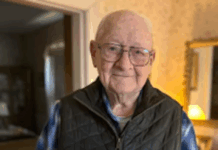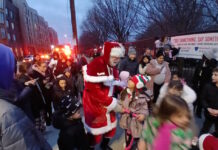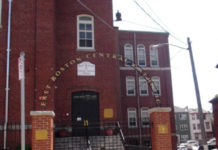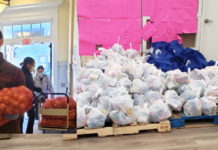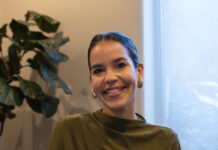In crisis and and times of distress, Mutual Aid Eastie jumps into action
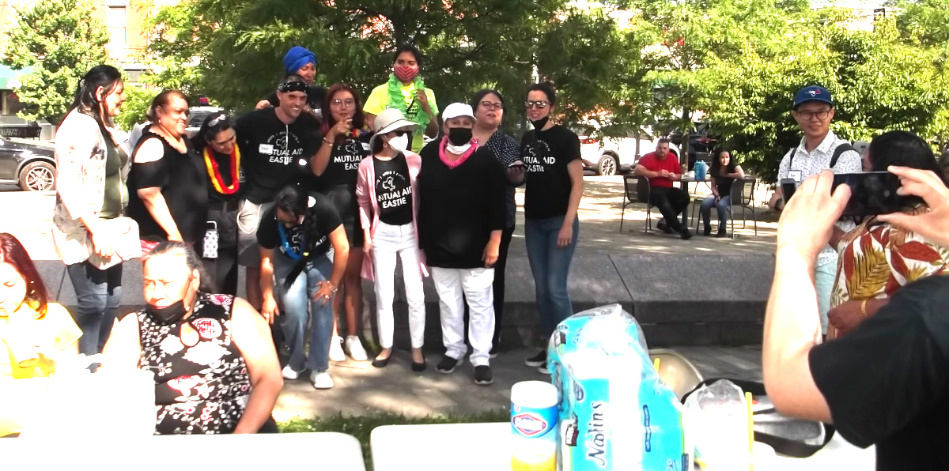
By ANNA HU
SPECIAL TO EASTBOSTON.COM
In April, as the trees outside her East Boston apartment began to flower, Jackelyn Ponce was at her wit’s end.
Ponce was living in a mice-infested home with two young children and a teenager, fumigation wasn’t working, and the landlord was unresponsive. A few months prior a white neighbor had called the police on them, as she had been threatening to do since the family moved in eight years ago.
She also kept telling them to go back to Mexico, even though they’re Salvadorian. Ponce’s husband was arrested that night, and although he was released the same day with no charges, the experience was rattling.
It was past time to leave the apartment, and Ponce needed help to make it happen.
She called up her friends at the community collective Mutual Aid Eastie, and with their combined efforts she found and moved her family into a new apartment within a month. “We’re an immigrant family and don’t have family close by, so they’ve become a second family to us,” she says in Spanish as interpreted by another member of the group, Deysi Gutierrez.
In the early days of the COVID-19 pandemic, mutual aid groups arose all over greater Boston with the urgency of sun-seeking sprouts, fueled by people with time to spare and a desire to help. As the height of the crisis passed and volunteers burnt out or returned to their pre-COVID commitments, many groups fell dormant. Others, like Mutual Aid Eastie, sprang in new directions.
Five years after its 2020 founding, the coalition is still growing. Its members affirm that mutual aid is here to stay and the time to protect one’s neighbors is now.
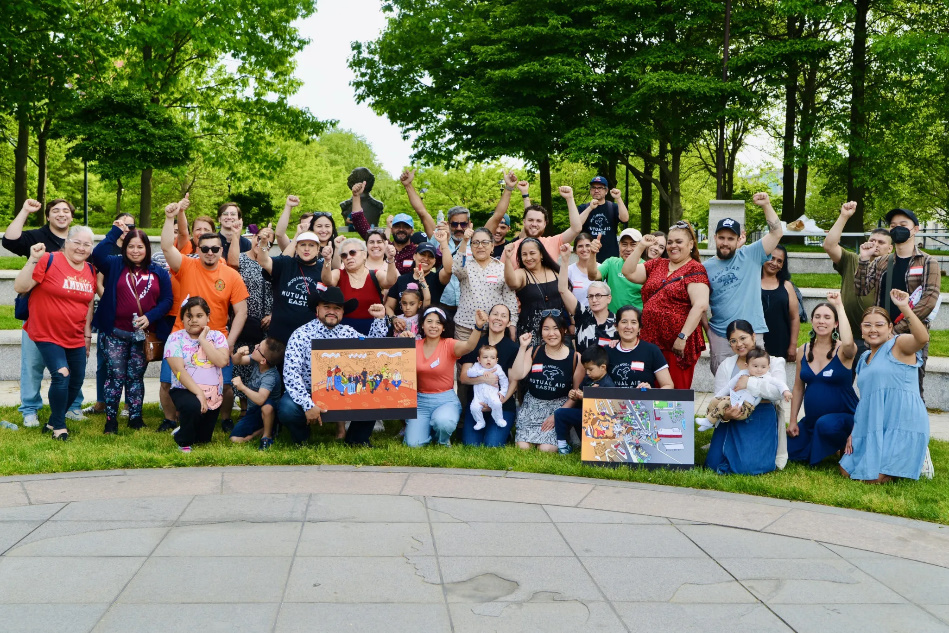
Mutual Aid Eastie is intentionally not a service-based organization or a non-profit. “What we are is a network that connects neighbors to neighbors, to services, and then to movement,” explains Neenah Estrella-Luna, who co-founded the group alongside three well-established local organizations and many neighbors.
Eastie Farm was the original fiscal sponsor. Maverick Landing Community Services was integral in securing early and ongoing funding, and the civic organization Neighbors United for a Better East Boston became a frequent partner.
Leaning away from a non-profit identity was a deliberate distinction the group made in 2021, once they had time to reflect on next steps.
The group worried about becoming beholden to their funders and how having paid staff would change their relationship to the work. After a nine-month deliberation, the consensus was clear. They would remain as a coalition and fulfill the mutual aid niche within the organizational ecology of East Boston.
The Mutual Aid Eastie network is made up of mostly of volunteers, with some paid members in the six-person core team that oversees day-to-day operations and high-level planning. Roughly three dozen “captains” are spread throughout the neighborhood and jump in as needed to drive someone to the airport, help manage an eviction notice or accompany a neighbor to housing court.
After first finding Mutual Aid Eastie two years ago when she was pregnant and looking for resources on workers’ rights, Ponce is now a captain and volunteers her free time to accompany folks to their appointments.
Community members can participate in a rotating schedule of programming, including weekly office hours where people can come in with a specific issue or ask more generally about resources. Some larger events, like a beach retreat last September, are organized mainly by the core team. Others, like childcare business training sessions, are led by local residents and help fill the gap in East Boston’s desperately needed childcare.
These programs are funded by a combination of resources from their fiscal sponsor, the grassroots activism-focused non-profit Resist, and grants from the state, city and private sector.
Last summer, the group hosted the Intercambio, or “Exchange,” program, a series of language sharing circles that brought together Spanish and English speakers in an informal, friendly space. Immigrants who might be on the waitlist for English learning classes could practice with native speakers, while primarily English speakers could practice their Spanish.
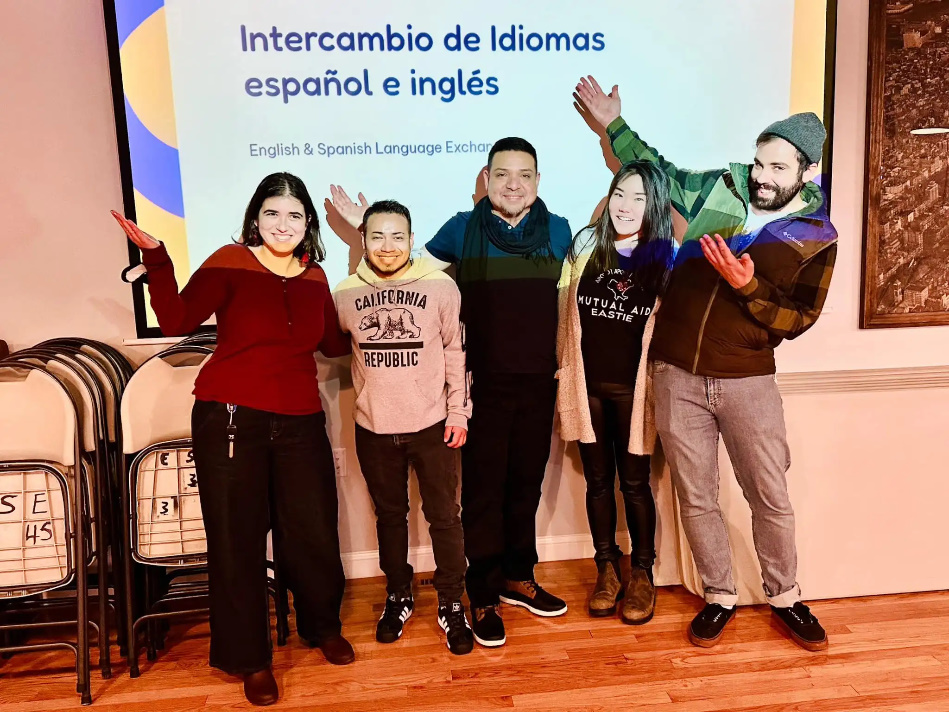
With Spanish speakers from El Salvador, Colombia, Venezuela, Nicaragua and Mexico intermixed in the circles, the conversations led to laughter as representatives from each country related their own unique phrases.
These are the kinds of events where people become connected into the network, says Penn Loh, senior lecturer and director of community practice in Urban and Environmental Policy at Tufts University. In 2024, Loh and several Tufts students published a report on mutual aid in East Boston, featuring groups including Mutual Aid Eastie. He described the leadership’s vision of letting the community take care of itself.
People are encouraged to both give and receive, to share their abundance —whether that be by donating to the little free pantry, helping write a resume, or distributing food. “The cultivation of that network is what allows the more decentralized community care to happen,” he says.
A more emotionally taxing aspect of Mutual Aid Eastie’s community work has been their involvement in local fire damage response. In the wake of a devastating fire that plowed through a triple-decker on Princeton St in July 2022, City Councilor Gabriela Coletta Zapata approached the coalition for help coordinating the city’s response.
As a trusted entity with direct ties in the neighborhood, Mutual Aid Eastie was able to verify the list of affected residents, making sure that the nine displaced families received the right resources. They then followed up with the city to make sure the families didn’t lose their temporary housing.
The coalition also took on a major role with the distribution of funds. What Mutual Aid Eastie did differently, Loh notes, is the “intentionality” about making sure affected individuals had a say in how the money was divided. A substantial portion of donations came in the form of gift cards, and those were split based on the number children in each family while the cash was split based on the number of adults. In subsequent fires where this process was repeated, residents chose a different formula that reflected their needs.
Over subsequent fires, the group has refined its role in the response. By working with organizations like the Neighborhood of Affordable Housing and the East Boston Social Centers to mediate communication between affected individuals and the city, they’ve been able to scale back their own efforts. Getting money out quickly is the new priority, and that process is handled by the city.
With two 2025 fires on Prescott and Saratoga St., the city stepped up and the process has worked much smoother.
These days, there are new worries to take the place of old ones. In the wake of ICE raids after President Trump’s inauguration, children were afraid to go to school and their parents were afraid to send them, says Estrella-Luna.
Without referring to specific details, she praised the work of community members stepping up and keeping each other safe. “What we believe is that everybody who lives here belongs here,” Estrella-Luna emphasizes. “If you are our neighbor, you are our neighbor, and it stops there.”
One key aspect of Mutual Aid Eastie’s work is the accompaniment, Gutierrez says. When she went with a neighbor to their asylum-seeking appointment in May, they were both anxious about potential interactions with ICE and planned for the worst-case scenario. “It’s like emotional support, but for systemic issues.”
East Boston is used to fending for itself, says Estrella-Luna. It’s a small neighborhood that’s geographically separated from the rest of Boston, and it has long been a hub for immigration.
The history stretches back to the Irish, Eastern Europeans, Jewish, and Italians arriving in the 19th century, to Southeast Asians in the late 20th, and most recently Latino immigrants. As a result, East Boston has historically been overlooked by the city.
“Everything that we have here, every little minuscule thing that we have, we’ve had to fight for,” Estrella-Luna says. “It’s something in the water about this neighborhood; it’s not just because we’re physically isolated. It’s the atmosphere.”
Anna Hu is a freelance writer in Jamaica Plain, Boston. This article was made possible by a sponsorship from EastBoston.com. All rights reserved.
Originally published July 8, 2025.



